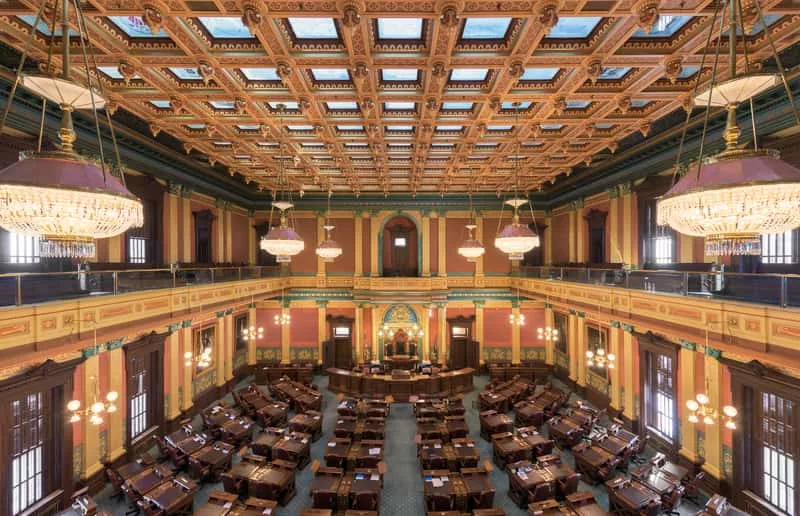State legislators are back in Lansing, the session just barely more than a week in, and already there’s a billion-dollar dispute on how to use state revenues.
On Friday, State Treasurer Rachael Eubanks, Senate Fiscal Agency Director Kathryn Summers and House Fiscal Agency Director Mary Ann Cleary released their revised economic and revenue projections for the remainder of fiscal year 2025, and upcoming 2026 and 2027 fiscal years.
“The state of Michigan heard good news today from our leading economists,” State Treasurer Rachael Eubanks said on Friday. “Our revenue estimates have exceeded expectations, with forecasts projecting a half a billion dollar increase this fiscal year and modest increases in future years. In addition, Michigan’s economy is showing positive signs. Inflation is cooling, the labor market is stable and incomes are growing. We are in a great position as the budget process begins.”
Senate Republican Leader Aric Nesbitt, R-Porter Township, reacted to the economic and state tax revenue projections, saying the $1.1 billion surplus over the next two years means should result in better roads and lower taxes.
“We have more than $1 billion in surplus projected over the next two years; we must use these funds wisely by prioritizing funding for our crumbling roads and bridges and providing permanent tax relief to struggling Michiganders. I am hopeful that the new balance of power in the Legislature will ensure our next budget focuses on responsible spending policies, including needed investments in education, public safety and transformational infrastructure, as well as putting money back in the pockets of those who need it most. We have a real opportunity to do what’s right for Michigan families and put taxpayers ahead of tax-takers.”
About the surplus forecast, State Budget Director Jen Flood said, “Our budget will focus on growing our economy, lowering costs for Michiganders, and helping kids learn. We look forward to working with leaders in both parties to pass a budget by the July 1 deadline.”
The state government’s fiscal year begins October 1. The January Consensus Revenue Estimating Conference’s detailed forecast – as well as links to presentations about the data – can be found at the state’s Department of Treasury website.






